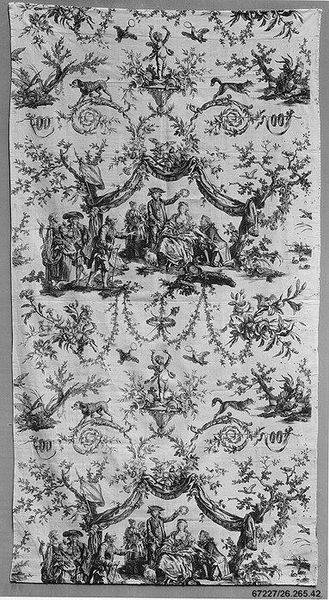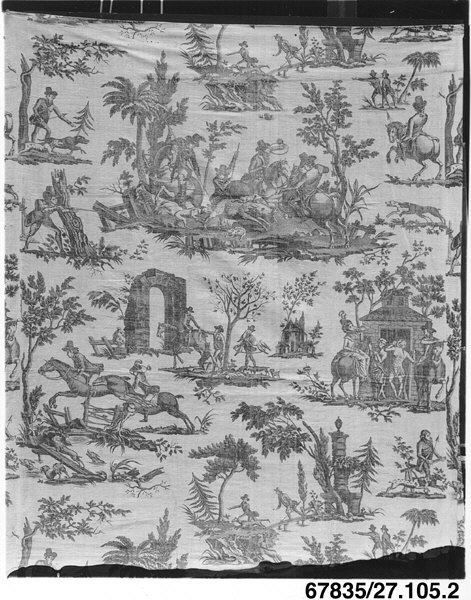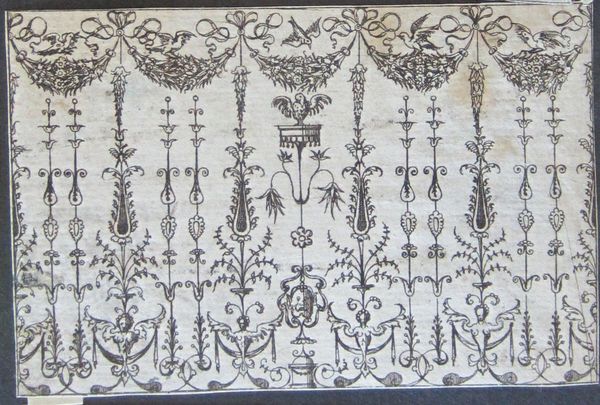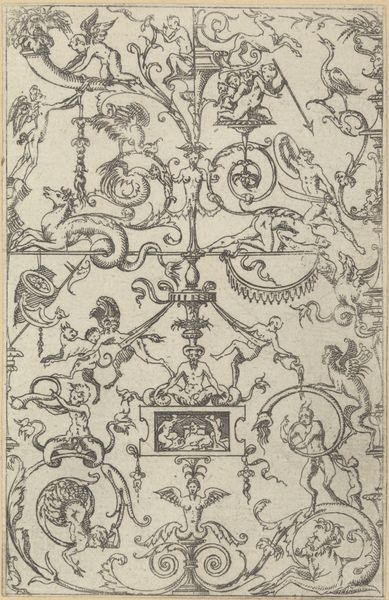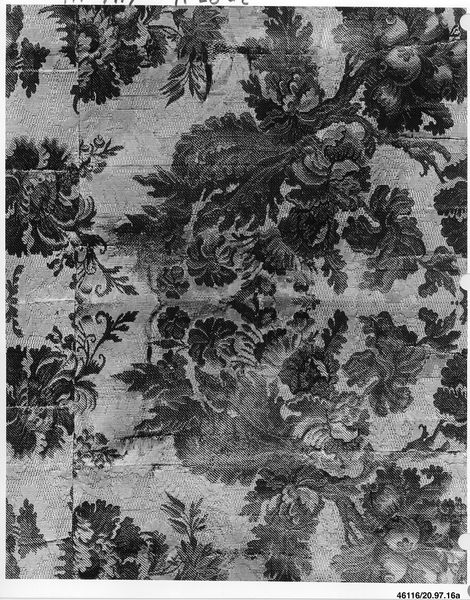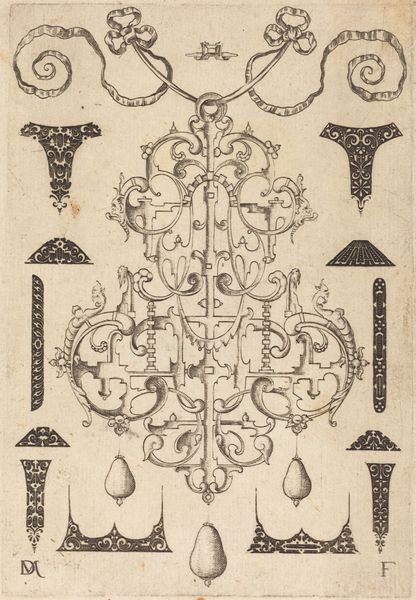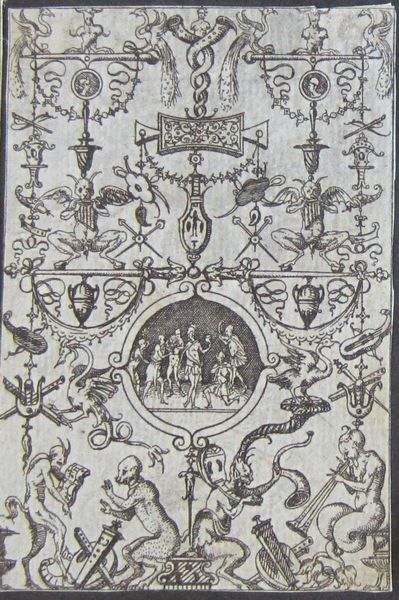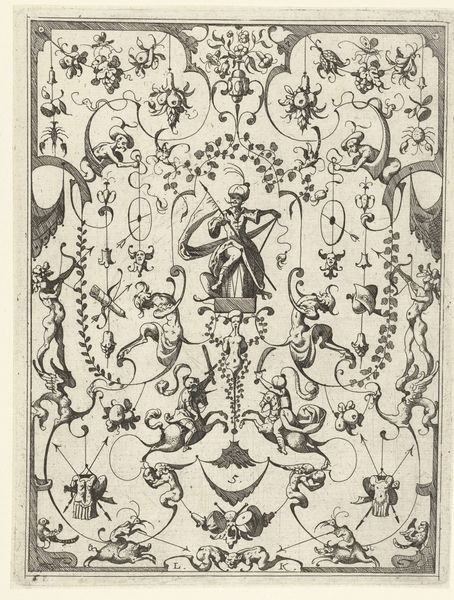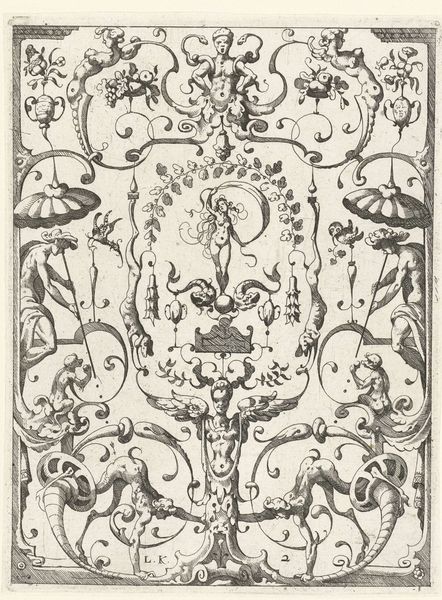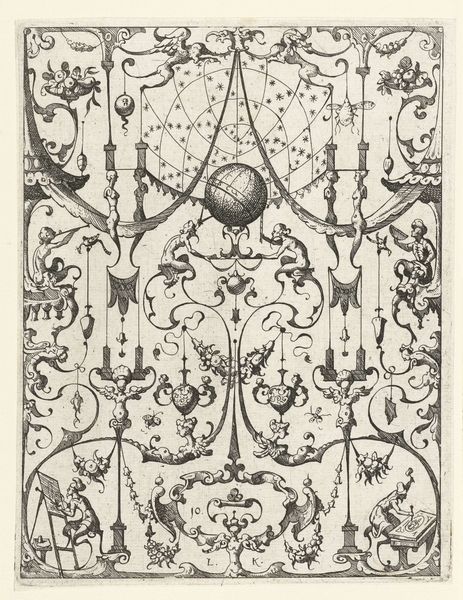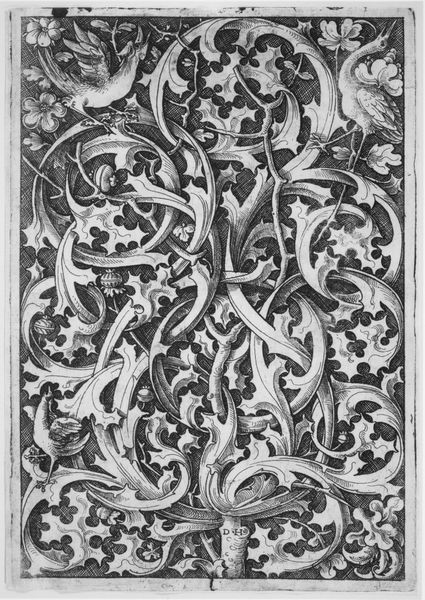
print, textile
# print
#
landscape
#
textile
#
flower
#
figuration
#
text
#
romanticism
#
genre-painting
#
decorative-art
Dimensions: a) L. 108 x W. 36 inches (274.3 x 91.4 cm) b) L. 106 1/2 x W. 36 inches (270.5 x 91.4 cm) c) L. 106 x W. 35 1/2 inches (269.2 x 90.2 cm) d) L. 107 x W. 36 inches (271.8 x 91.4 cm)
Copyright: Public Domain
Editor: Here we have “The Swing,” created around 1789 by the Oberkampf Manufactory. It's a printed textile piece. I'm struck by how dense the composition is; it feels very layered and decorative. What can you tell me about it? Curator: Looking at the textile production, we need to consider Oberkampf’s manufactory as a crucial element. This wasn’t just design, but industrialized art. The repetitive motifs, idyllic scenes...it all speaks to a rising consumer culture. How does the material itself – a printed textile – change our understanding of “high art” themes, like the swing scene? Editor: That’s interesting! So, it’s not just the image but how it was made and for whom? Does the choice of textile mean it wasn't intended for the same audience as, say, a painting of a similar subject? Curator: Exactly. We are prompted to challenge traditional art historical hierarchies. Textile production involved labour, trade, and a specific kind of consumption. Consider the labour involved. Think of the accessibility. This print brought the elite fantasy of leisure depicted to a wider, potentially middle-class audience through replicable means. Editor: It's fascinating to consider art as a product of manufacturing and accessible, instead of solely focusing on the artist's individual genius. Curator: Right. The textile medium alters how the artwork functions within society, connecting artistic expression with everyday use, economic systems and class dynamics of late 18th-century France. What do you make of its existence on the eve of the French Revolution? Editor: Perhaps it reveals the priorities of the age, the concerns and fantasies of those who could afford it, just before everything changed. I never thought about textiles holding so much significance! Curator: Thinking about the materiality and mode of production can radically transform how we interpret images.
Comments
No comments
Be the first to comment and join the conversation on the ultimate creative platform.
